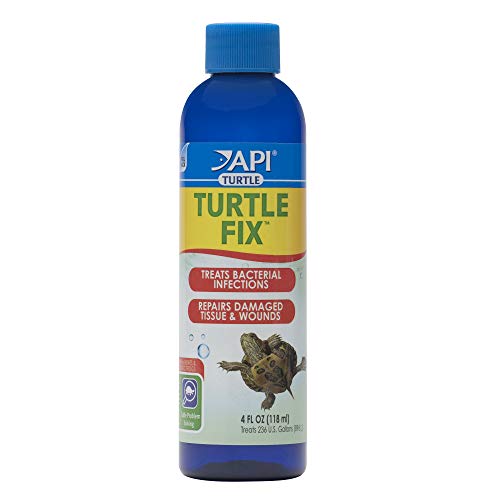White spots on a turtle’s shell are a pervasive issue. However, luckily it is a problem that is easy to fix. White spots can occur as small areas or large regions. It can also be found on the neck and legs. Mineral deposits, shell rot, loss of the skin, etc., are the three primary reasons for these spots.
The difficulty is that these problems can be hard to distinguish. Hence, it’s critical to figure out what you’re up against before taking any action. We’ll go through how to recognize, treat, and avoid each of them in-depth in this article. We’ll also give you information on when to consult the vet to cure these white spots.
Table of Contents
White Spots on Turtle Shell: Major Cause
White spots on a turtle’s shell can be caused by a variety of factors, including fungal or bacterial infections, calcium deficiency, or injury. It is important to seek veterinary care if the white spots are accompanied by other symptoms, such as lethargy, appetite loss, or difficulty breathing. Proper nutrition and maintaining a clean habitat can help prevent the development of white spots on a turtle’s shell.
Reasons for spots on a Turtle’s Shell
There are various reasons why your Turtle’s shell will start having white spots. The three most predominant reasons are as follows:
1. Mineral Deposits
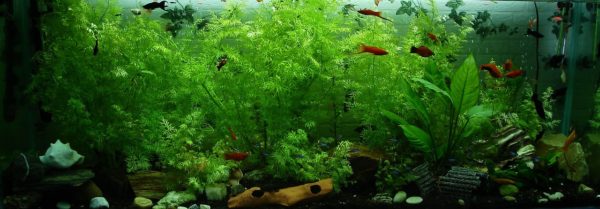
You may see white spots collecting on just about any section of glass in your pet’s aquarium where the water has dried. This is most likely to happen if you have hard water. Properties like calcium carbonate and magnesium are abundant in hard water. None of these substances is indeed harmful to your pet. However, calcium carbonate dries on the animal’s shell after it exits the water, which gives it a white, chalky look.
Mineral deposits on a turtle’s shell almost always have large areas that turn white rather than small spots scattered all over the shell. Because it is out of the water, the top half of the shell, called the carapace, often turns white. If you notice your turtle’s shell goes white in significant places but exhibits no signs of illness, it’s most likely due to mineral deposits. Take some vinegar and apply it to one of the white places to be sure. The vinegar’s acetic acid will induce a significant bubbling response if calcium carbonate is the culprit. This does no harm to the turtle and indicates that hard water is to blame.
2. Shell Rot
Shell rot is also known as ulcerative shell disease. It is referred to as a bacterial or fungal infection of the shell. Shell rot typically begins with little patches and spots rather than the enormous regions observed with mineral deposits. It can take on a variety of appearances depending on the pathogen that causes it. These spots become more prominent with time. It later results in bright red patches, bleeding, mushy areas, dents, and pitting. Shell rot is a dangerous disorder that affects the bones rather than the shell. If not appropriately treated, Shell rot can lead to septicemia or fatality.
So, how do you identify a shell rot? If you notice your Turtle’s shell showing dents, exhibiting small holes, etc., shell rot is a strong possibility.
3. Shedding of scutes and skin
The skin of all turtles shed. The scutes of most aquatic turtles are also shed. This keratin renewal enables development and aids in the removal of algae and grime. The new shell or skin should be brilliant, colorful, and clean after ecdysis.
The shedding scutes are relatively thin and peeled off in a single transparent layer. Shed skin might be in little bits or strands that resemble white thread or cotton-like substances. When a turtle is immersed, healthy shedding skin can hang off the neck or limbs and hover. It appears as white or grey spots in this situation. Although, it is exceedingly thin and not noticeable whenever the animal is drying. Scutes that are shedding may have a whitish appearance. However, if looked at closely, you can notice that this is due to trapped air. In this case, they will be metallic and not mushy.
How does shell rot in Turtle’s look like?

Shell rot in turtles is mainly identified by prominent white patches that develop across the shell. White patches on turtle shells are typically accompanied by fluid leakage. Bits and chunks of the shell may be seen dropping off. The patches of skin where the scute has come off are clearly visible now. A fould smell eminantes from the wonds. Just by glancing at the extremity of the problem, you can identify if the white patches are caused by shell rot.
What is shell rot and what causes it in Turtles?
In turtles, shell rot is a severe medical problem. This can be affected by a multitude of factors, including injuries, shell fractures, and a polluted habitat. If the turtle merely has a slight case of shell rot, it will not appear unwell and will stay fully active.
Let’s take a closer look at the causes:
1. Injuries
For the most part, turtle shells are strong and durable. However, they are vulnerable to catastrophic injury. Almost all of the time, it’s because of a fight with another turtle. Males are more likely to engage in these battles. Such brawls may lead to injuries, which, if ignored, might lead to significant problems later.
2. Cracked Turtle Shell
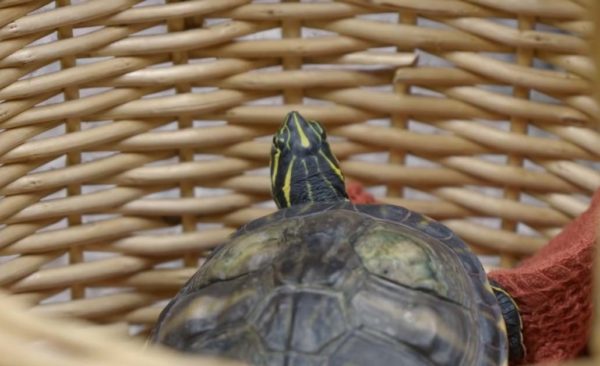
The shell of a turtle can break for a variety of causes. For instance, this might occur as a result of the enclosure’s humidity or temperature being too low. When the substrate is excessively dry, a turtle species that is used to a humid climate may develop shell or skin problems. When the substrate is excessively moist. However, a dry environment species’ outer shell softens, allowing infective agents to penetrate. Aside from that, inadequate nourishment, incorrect warmth, and sharp items in the cage can cause corrosion in the shell. If the cracks aren’t repaired quickly enough, shell rot can occur.
3. Inadequate tank conditions
Because turtles like to eat and excrete in the water, their tank may quickly become filthy. As a result, you’ll need to replace the water frequently and maintain a strong filtering system. Shell rots are more common in species with softer shells, like as red-eared sliders, that live in a polluted environment. Dirty or moldy bedding, in addition to filthy water, can cause shell rot. As a result, make sure to clean it regularly.
What is a shell rot?
One of the most prevalent and harmful causes of white patches on turtle shells is shell rot. Shell rot can be lethal if not addressed in a timely manner. It is, however, totally curable with early intervention. It generally happens when a wound is left untreated over an extended period of time.
Can shell rot kill turtles?
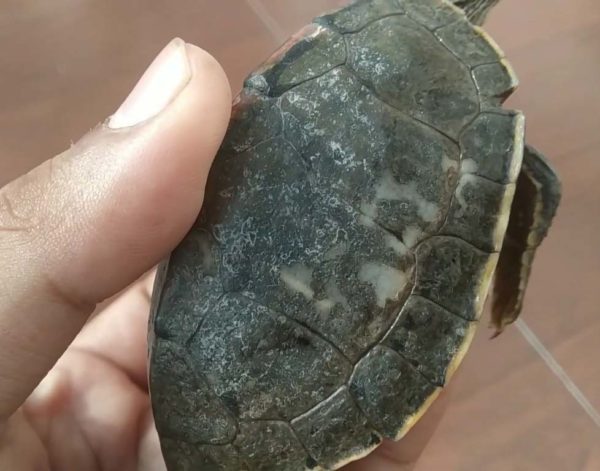
Viruses can enter the circulation and lead to septicemia when shell rot breaks through the shell. As a result, your turtle can die in a matter of few days. Turtle shell rot can result in infections such as bacteria or fungi damaging the live tissue under the shell’s outer layer if prompt medical care is not provided.
If left untreated, infections can grow and last for years, causing considerable tissue damage. As a result of the shell rot, a severe septicemic cutaneous ulcerative illness can develop. The fast proliferation of germs in the bloodstream is a symptom of this condition. It can be fatal if germs in the turtle’s bloodstream assault essential organs.
Can turtle’s shell rot be treated at home?
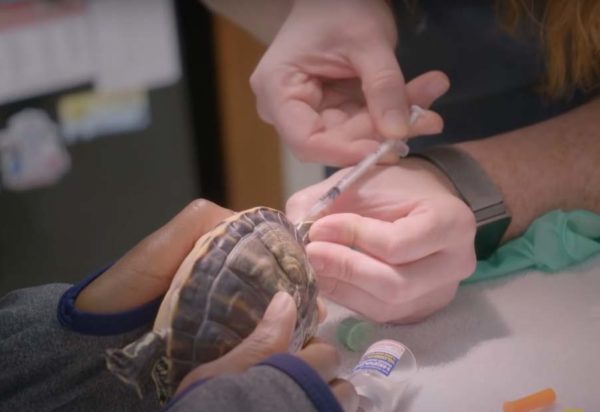
You may simply treat shell rot at home if it’s only a mild condition. Firstly, you must figure out what’s triggering the shell rot and fix it. It might be associated with the existence of dangerous items in the tank, bad water quality, or hostile tank mates. After that, take the diseased turtle out of the aquarium. Keep the turtle dry and out of the water until the shell has healed entirely. You can only get him wet while you’re cleaning the shell. Scrape off any traces of algae, filth, or broken parts of the external surface of shell plates with a block of hypoallergenic soap and a soft-bristled toothbrush when washing him.
You can simply scrape out the pits once you’ve eliminated the initial layer of dirt. If they don’t fall out readily, don’t press it; instead, leave them alone. A disposable card can be used to remove the dried white patches.
Once the turtle has dried, clean the shell with a mild antiseptic. Instead of hydrogen peroxide, you can use a chlorhexidine solution. This is considered to be safe for robust epithelial cells while also reducing the recovery process. Apply therapeutic lotion-like silver sulfadiazine to the turtle shell once it has been cleaned. Nevertheless, you should check your veterinarian before buying it because it is a prescription cream.
When to take the Turtle to the vet?
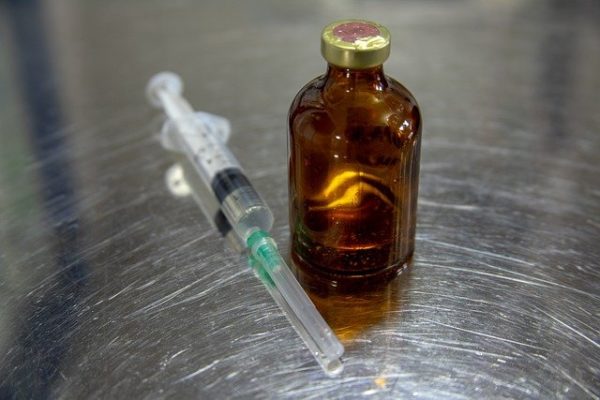
Take your turtle to the doctor as soon as possible if he doesn’t show signs of recovery after one or two weeks of home care. Failing to provide prompt medical attention might result in a life-threatening condition known as SCUD. Seek veterinary assistance if pus is pouring from wounds or there are noticeable red spots under the shell. This indicates that the infection has progressed to the point where it can no longer be managed at home. A few antibiotic injections and anaesthetics are likely to be recommended by your veterinarian.
Hard water and your turtle
Although it may seem strange, hard water is a common cause of white markings on turtle shells. The shell is generally uniformly covered in white in this case. If this isn’t the case, a piece of the shell might also be coated with white spots. The elevated grooves or edges of the turtle shell are prone to these spots. These dazzling white spots can be easily removed with moderate cleaning or rubbing.
Applying a drop of vinegar to the lesion and watching it fizz is the easiest way to see if the spots are visible due to hard water. If it occurs, the white areas are very certainly caused by calcium carbonate in hard water.
What is hard water?
Hard water is known as water that contains large amounts of minerals such as calcium and magnesium. The water evaporates when you have hard water, leaving mineral remnants behind. You can generally find mineral deposits on shower faucets, sinks, bathtubs, and even on cups and glasses. The United States has a relatively high concentration of hard water due to ancient seabeds that were covered with limestone in the past.
How to fix white spots on a turtle’s shell from hard water?
This is easy to do and can be done shortly. To eliminate the stains, utilize refined water or water that has been handled with a water channel or conditioner.
Ensure that the water you use doesn’t totally supplant the hard water. This will make your turtle experience a natural shock. Therefore, start with a 25% water change to give your turtle lot of time to acclimate. You’ll notice an immediate boost in reduction of white spots on a turtle shell once you substitute the hard water. Rub the shell with an apple cider vinegar solution to eliminate the stains if you wish to accelerate the method. Pour a few drops of apple cider vinegar into a glass of water and swirl well. After that, clean the shell with a gentle toothbrush. Once you do this, you’ll be able to remove the stains quickly. Stop immediately if you see any sores, rashes, or injuries in the shell throughout the procedure.
Fungal Infections in Turtles

In turtles, contagious fungal infection shows up as green raised spots on the shell. Dark and white fluffy patches usually trail it. It’s usually caused by tank settings that haven’t been properly maintained. A fungal infection can be efficiently treated if detected and treated early enough to avoid additional outbreaks. The white spots are generally caused by skin shedding.However, if you notice that the shell is evenly coated, it is most likely a fungal infection.
However, there are a few more techniques to detect it. You can typically tell by looking at the rate of infection, for example. It’s an infection if the spots seem to become more prominent by the day.
How do Turtles get Fungal Infection
Fungal infections are fairly frequent, and if caught early enough, they are not hazardous. Firstly, you must understand the fundamental causes behind this. Inadequate water quality and a lack of adequate basking areas are the most common causes. Because turtles prefer to eat and excrete in the water, the water in their tanks tends to grow dirty rapidly.
As a result, both leftover food and trash will sink to the tank’s bottom. It creates the ideal environment for bacteria to thrive. This encourages the spread of the fungus. A turtle’s tank should be cleaned often and thoroughly. It’s also possible that warmer water in your turtle’s aquarium encourages fungus development.
A turtle not obtaining adequate sunbathing chances is another prevalent cause of fungal diseases. This might be due to the fact that the basking location isn’t large enough or is in a dimly lighted region. If your turtle’s primary source of basking is a lantern, ensure it’s strong enough to meet the requirements for basking.
How to treat fungal infections in Turtles?
Fungal infections are easy to cure. However, most importantly, they can be avoided totally. More effort will be needed than just switching hard water. Giving the turtle a salt bath to cleansing the tank and habitat are all possible treatments.
1. Salt Baths For Turtles
Salt showers are a fast and clear method for forestalling parasitic turn of events, flourishing in warm, clammy conditions. You’ll require shower salt and a wipe for this. The water temperature for reptiles like red-eared turtles ought not to outperform 75 to 85 degrees Fahrenheit. To be sure, a thermometer ought to be utilized all the time.
For 5 liters of water, you’ll require around a quarter cup of washing salt. Eliminate your turtle from the tank. Then, at that point, place him in the washing can subsequent to filling the huge container with water and salt. Permit him to stay there for 40-45 minutes. Subsequently, the salt will productively kill the microbes while additionally purifying the cuts.
Try not to wipe the turtle off after he’s finished sunbathing. Allow the body to absorb the arrangements appropriately. You can continue to do this for more than about fourteen days to forestall future contaminations.
2. Cleaning the tank
It’s critical to clean the tank regularly. A filthy tank with low characteristics produces fungal diseases. Depending on the state of the tank, you may need to do partial and total water replacements on a regular basis.
3. Cleaning the Turtle with soap and iodine
You must ensure to check your turtle for any signs of visible injury before cleaning it with soap and iodine. If your turtle has any recent wounds or cuts, you’ll do much more harm than good.
Place the turtle in a large container and begin washing the shell. Because turtles are susceptible to salmonella, it’s better not to clean them in a sink. Hypoallergenic soap, betadine solution, and soft-bristled toothbrushes are all required. It is important to remember that the soap has to be fragrance-free. Begin carefully cleaning the shell with the toothbrush and soap. Make sure the fungus is completely submerged in water, but don’t use a lot of soap.
After you’ve finished washing the shell, rinse the turtle with fresh, hygienic water and place him under the light to dry. You may gently pat him dry now. After he’s totally dry, use a cotton pad or bud to apply a diluted solution all over the shell. We suggest Betadine because it’s safe for all reptiles. Use ten parts water and 1 part Betadine to produce the Betadine solution. Gently clean everything off after using the diluted iodine solution. Finally, put Betadine ointment on the turtle and allow it to air dry.
Products you should buy for your Turtle’s shell
1. Nature Zone Turtle Fungus Bath Treatment
This bath solution is meant to keep your turtle safe from fungi and bacterial illnesses. Sweet basil, celery seed, and clove oils are active components. It cures and eliminates fungus from your turtle’s shell gently and efficiently. This fungal bath treatment also helps to avoid puffy and inflamed eyes in turtles who have been kept in captivity.
2. API Turtle Fix
This antibacterial turtle cure can treat bacterial infections on a turtle’s shell and limbs. The natural cajeput oil heals and protects wounds from bacterial development. Cell damage, reddening of the skin, a foggy white film on the skin, and open wounds benefit from this antibacterial therapy. Turtle Fix is also used to keep damaged shells from being infected with shell rot.
Conclusion
White patches on turtle shells are incessant and inconvenient to a turtle’s prosperity. This may be the consequence of various clinical and way of life factors. Also, the advancement of patches and their power is not entirely settled by the causes. The white patches produced by hard water are not dangerous. With weakened apple juice vinegar, you can wipe the shell without much of a stretch. Changing to cleaned or separated water will likewise keep away from future white patches.
White stains on the shell brought about by contaminations and shell decays can turn out to be genuinely perilous in the event that not treated speedily. In the event that the turtle isn’t dealt with quickly, he might get septicemia, a lethal sickness. At last, the absence of adequate enlightenment is known to corrupt the shade of the shell, making it look lighter and blunter.
We trust that this guide has assisted you with understanding these white patches on turtles and ways of really focusing on them in a superior manner!


